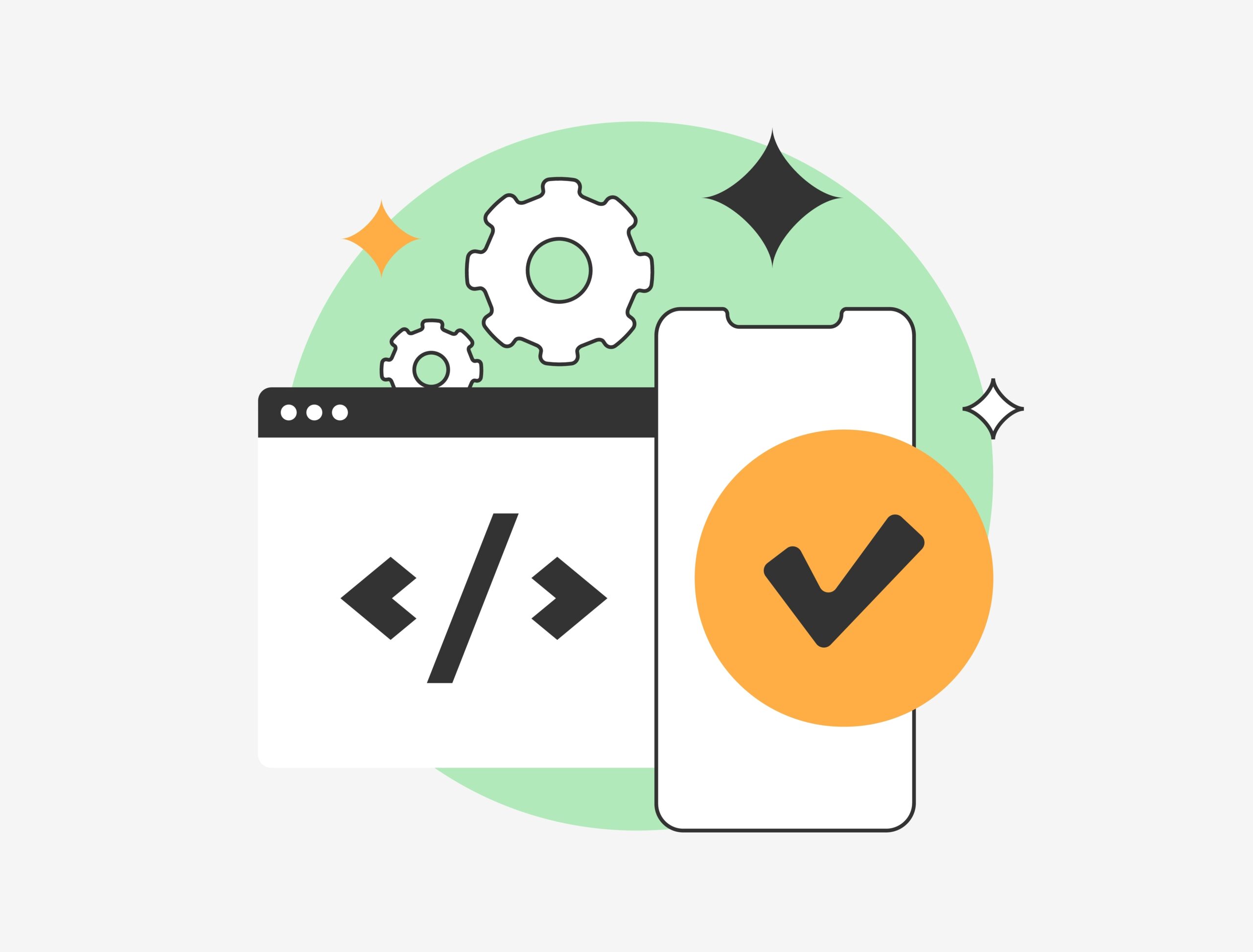Farcaster Frames: build tappable posts users love
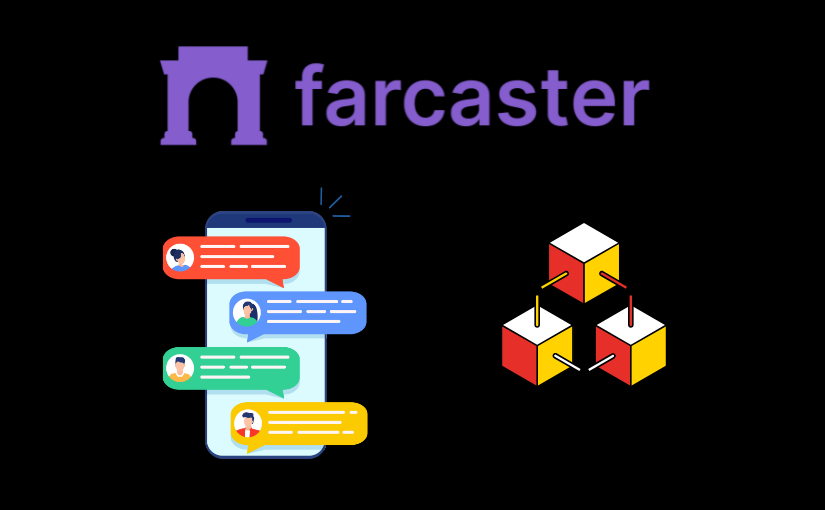
Have you ever posted something you knew was good… only to watch the clicks vanish the moment people hit a landing page? What if your post could be the product experience—tappable, fast, and finished right in the feed?
That’s the magic of Farcaster Frames. They turn a cast into a mini-app with buttons, state, and verified actions—no janky redirects, no slow pages. I’ve been testing them across onchain use cases (mints, claims, quizzes, simple lead capture), and when you get them right, people don’t just view—they tap.
If you’re building onchain products, hunting for higher engagement, or just want to ship something fun and native to social, this guide will help you move faster and avoid the usual faceplants.
The pain: posts that don’t convert, and tools that feel clunky

Let’s be honest about what kills engagement today:
- Link-outs break flow. Each extra step bleeds users. Hick’s Law says more choices increase decision time; fewer, clearer options win. See Nielsen Norman Group.
- Mobile latency crushes intent. On mobile, 53% of visits are abandoned if a page takes longer than 3 seconds to load. Faster feels safer—and converts better. Portent found conversion rates drop steadily as load time rises from 1s to 5s.
- Traditional landing pages aren’t built for feeds. Tiny text, complex nav, and “desktop-first” layouts don’t translate on a phone in one thumb.
- Builders guess instead of ship. Should the button say “Mint” or “Mint Free”? 1, 2, or 4 buttons? What image size? People burn days debating the basics and ship slower.
- Frames feel “new.” Specs, signed requests, the right tags—easy to miss one gotcha and watch your Frame silently fail in clients like Warpcast.
Real example: a simple “Free Mint” Frame with one primary button outperformed the same offer as a link-out page by 2.1x taps per impression and 1.6x completions—no surprise when the action happens in-feed and loads instantly.
If you’ve ever watched a promising cast stall at the click, you’re not alone. The problem isn’t your idea—it’s the friction.
The promise: tappable posts that work like mini-apps in feed
Frames flip the script. Instead of sending people away, you bring the thing they want into the post.
- Mini-apps inside a cast. Show a bold image, give up to four buttons, and control the next step with a server response. It feels native and fast.
- Guide users step by step. One tap at a time beats a busy page. “Step 1: Check eligibility” → “Step 2: Confirm” → “Step 3: Claim.”
- Collect input and personalize. Use simple choices (A/B/C), greet users by handle, and gate claims per user with signed request data.
- Verified actions, fewer bots. Clients can send signed info (like FID and custody address), so you can trust who’s tapping and prevent spoofing.
The outcome: more taps, faster completion, and happier users who never feel like they’re leaving home base.
What you’ll get in this guide
I’ll make Frames feel obvious—so you can ship today, not next week. Here’s what I’ll walk you through:
- How Frames render in clients like Warpcast and what “good” looks like in a crowded feed.
- The anatomy of a high-converting Frame: image that reads at a glance, 1–3 crystal-clear buttons, the right post_url, simple state, and basic auth.
- Design rules that earn taps: bold headline, strong contrast, obvious outcome. Think TikTok thumbnail energy—without the clutter.
- Build patterns and a launch checklist you can copy: from a minimal first Frame to faster response times and clean analytics.
By the end, you’ll have a repeatable way to turn “nice post” into “finished action.” Ready to see exactly what Frames are and why they work so well compared to links? I’ll show you how they render, what tags matter, and how the tap-to-response cycle actually works next.
Frames 101: what they are and why they matter

Here’s the simple truth: people tap what feels native. If I force someone to leave their feed, wait for a page, then hunt for the next action, I’ve already lost half the room. Frames fix that.
“Don’t make me think.” — Steve Krug
Frames turn a regular Farcaster cast into a fast, interactive experience that lives right inside the feed. Users tap once, see the next step instantly, and keep going. No tab juggling. No context switch. Just momentum.
What are Frames (in plain English)
Frames are just web pages with a few special <meta> tags in the <head>. If those tags are present, Farcaster clients know to render the page as a tappable card: an image plus up to four buttons. When someone taps a button, the client securely sends a request to your server, and your server replies with the next “frame” (a new image + new buttons). That’s the loop.
Think of it like a mini app that advances one tap at a time:
- Step 1: Show a bold visual and a clear outcome (“Mint free”).
- Tap: The client posts to your server with signed user info.
- Step 2: You return a new image (“Minting…”) and the next action (“Confirm”).
- Tap: You finalize, personalize, or hand off to an external link only if needed.
It feels native because everything happens inline. No reload whiplash, no ugly redirects, just a clean, step-by-step flow that respects the feed.
Where Frames show up
Anywhere a Farcaster client supports the standard, Frames render. Build once, distribute everywhere that implements the spec. Today, that includes popular clients like Warpcast, with more popping up as the ecosystem grows.
- Cast it in a supported client, and it renders as an interactive card.
- Recasts carry the Frame with them, so your experience travels.
- Fallback is just a regular link on clients that don’t support Frames yet.
Because it’s an open, documented spec, you’re not pinned to a single app. You get portable distribution that feels consistent wherever your audience hangs out.
Why Frames outperform links
I’ve watched countless onchain launches stall at the click-out. It’s not the idea—it’s the friction. Frames remove that friction and concentrate attention where it matters: the next tap.
- No context switch: The action happens inside the feed, which reduces the “where am I?” moment that kills intent. UX research on interaction cost consistently shows that fewer steps and fewer decisions lead to higher completion.
- Clear, limited choices: Buttons set crisp outcomes (“Claim points”, “Try demo”), not vague destinations. That constraint boosts tap-through versus ambiguous link-outs.
- Feels instant: Lightweight images and snappy responses make progress tangible. If the next state appears immediately, people keep going.
- Trust and personalization: Each tap includes a signed payload from the client (like the user’s FID). That lets you personalize (“Hey @handle!”), gate claims to one per user, and block spoofing—all without asking someone to log in mid-flow.
- Better intent capture: Even simple interactions—like a one-tap quiz or a two-step mint—convert because users never hit a cold webpage. Long-form research from conversion experts like Baymard Institute has shown that extra steps and form fields crush completion; Frames keep the path short by design.
Real talk: a link asks for patience; a Frame rewards curiosity. I’ve seen Frames for quick mints, NFT claims, gated downloads, and mini leaderboards beat their link-out counterparts simply because the first tap happens in seconds, not 10–15 seconds later after a page load and a permission prompt.
If you’re wondering which exact tags trigger that in-feed render, how the button taps reach your server, and how the signed request keeps it honest—that’s exactly what I’m unpacking next. Want the precise anatomy (image, buttons, post_url, state, auth) and the gotchas to avoid?
Here’s the truth: the Frames that feel “magical” are just well-structured HTML meta tags plus a fast, trustworthy server. Once you understand the handful of moving parts, you can ship confidently, debug in minutes, and build flows people finish.
“People don’t want to click; they want to complete.”
Frames are defined in the <head> of a regular web page. When a Farcaster client (like Warpcast) sees the required properties, it renders your page as an interactive Frame instead of a plain link preview.
- Version and enablement
- fc:frame and fc:frame:version – Signals “this is a Frame” and which version you target.
- Image (the visual users see)
- fc:frame:image (or og:image) – The URL to your image.
- fc:frame:image:aspect_ratio – Common: 1:1 (square) or 1.91:1 (landscape). Pick one and design for it.
- Keep text big, contrast high, and the focal point centered so it survives cropping in different clients.
- Buttons (your CTAs)
- fc:frame:button:1..4 – The label text for up to four buttons. I recommend 1–3.
- Button actions – Each button can either:
- Post back to your server (stateful step) via post_url, or
- Open a link/deep link (e.g., your app or a transaction link) when you truly need to leave the feed.
- post_url (the brain)
- fc:frame:post_url – Where button taps are sent. Your server returns the next Frame state (a new image and new buttons) in response.
Quick visual tips you’ll thank yourself for later: square is safest for consistency; bold headline; a single outcome; readable on a small phone at arm’s length. You’ll see why this matters in the next section.
post_url and the request cycle
Every tap sends a POST to your post_url with a signed payload. You respond with the next step. That’s it—and it’s powerful.
- What you receive
- Which button was tapped (index)
- Context (cast ID, message hash)
- User identity data such as the FID in a signed envelope (so you can trust it)
- Optional user input if your Frame collected any
- What you return
- A new image URL for the next step
- Up to four button labels for the next choices
- Optionally switch actions (e.g., step 1 posts back, step 2 opens a link)
Think of it like a chat with images and buttons. A few real patterns that work right now:
- Two-step claim: “Claim free” → verify FID → “Confirm claim” → show success + “Open wallet.”
- Three-question quiz: “Q1: A/B/C” → “Q2” → “Q3” → show score + “Share result.”
- Mint preview: “See art” → “Approve mint” → “Open transaction” deep link.
Speed is non-negotiable. Nielsen Norman Group’s usability research shows users maintain flow under ~1 second of latency—and anything near ~0.1 seconds feels instant. Keep handler responses lean, cache smartly, and you’ll feel the taps multiply.
Source: NN/g – Response Times
Auth and trust: using the signed payload
Every button tap arrives with a signed envelope that lets you verify who tapped and trust the request. This is your edge—use it.
- What to verify
- The signature matches a valid Farcaster signer for the given FID.
- The message hasn’t been tampered (compare hashes, verify the envelope).
- Optional: ensure it’s fresh (timestamp/nonce) to prevent replay.
- How to verify fast
- Use a Frames helper library or an API that validates the trustedData for you.
- On success, fetch user details (handle, connected addresses) from your preferred Farcaster API or hub.
- Why it matters
- One-claim-per-user: Key by FID and enforce idempotency.
- Gated access: Only allow certain FIDs or addresses to advance.
- Personalized steps: “Hey @handle” or “You have 120 points” right in the image you render.
Pro move: attach a short-lived, signed server-side state token to each step (JWT or HMAC). When taps come back, you can trust where they were in the flow without storing big session blobs. This keeps handlers stateless and snappy under load.
Spec refresher when you need exact keys and behavior: Farcaster Frame Specification.
Common pitfalls
- Mismatched image sizes
- Design for the aspect ratio you declare (1:1 or 1.91:1). Center critical content and avoid tiny text.
- Keep images lightweight (often under ~500–800 KB). Optimize JPEG/PNG or a lean animated GIF if you must use motion.
- Too many choices
- Hick’s Law and the well-cited “jam study” show that fewer options increase completion. In one experiment, 6 choices led to dramatically higher purchases than 24.
- In Frames, 1–3 buttons typically beat 4—less thinking, more tapping.
- Slow endpoints
- Every extra 500 ms bleeds intent. Cache static steps at the edge, pre-generate common images, and keep your handler I/O minimal.
- Measure TTFB and aim for sub-300 ms when possible to feel instant.
- Not verifying the payload
- Skipping signature checks invites spoofed taps and fake claims. Always verify before you mutate state or grant rewards.
- Forgetting back/refresh states
- Users re-tap, refresh, and share. Make steps idempotent, include a “Resume” image path, and gracefully re-render the correct step.
- Opening links too early
- Keep taps native as long as you can; only deep link when the action truly requires leaving the feed.
Reference: Iyengar & Lepper (2000) – Fewer options can increase action
Here’s the fun part: once the plumbing is right, your image and CTA copy do the heavy lifting. Want a Frame that stops thumbs and earns taps on sight? Let’s talk visuals, wording, and button strategy next—what would your primary button say if you had only two words to win the tap?
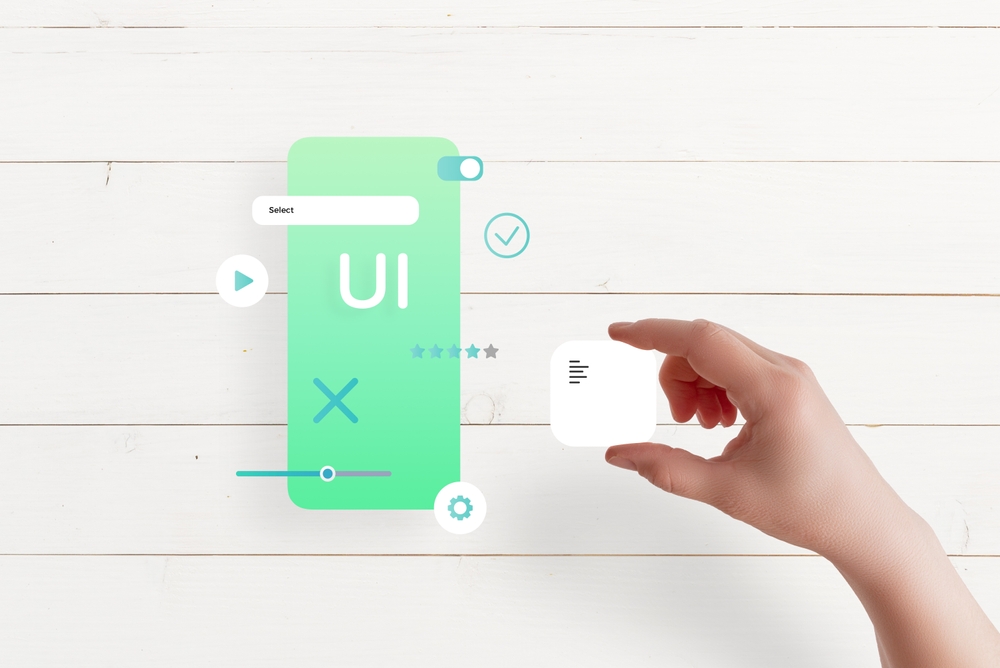
Every tap starts with a gut reaction: do I understand this in under a second, and do I want what it promises? That’s the bar. When you design Frames with instant clarity, the taps follow naturally.
“Clarity beats cleverness. Make it obvious; make it irresistible.”
Visuals that stop the scroll
People scan feeds at speed. Your job is to arrest attention and deliver one promise at a glance. Research shows we can recognize visual content in as little as ~13 milliseconds (MIT) and we scan in an F-pattern on small screens (Nielsen Norman Group). Build for that reality.
- Use a big headline. 5–7 words, max. Promise an outcome, not a feature.
- One focal visual. A product shot, expressive face, or simple icon that supports the headline.
- Crush the contrast. Dark-on-light or light-on-dark with bold color accents. No gradients behind small text.
- Steal from Reels/TikTok thumbnails. Cropped faces looking at the promise, bold type, clear stakes.
- Kill clutter. If it doesn’t support the tap, it’s gone.
Real examples that work in feed:
- “Mint free • 24h left” — Single artwork mockup, tiny clock icon. Buttons: Mint free, Preview art.
- “Gas is cheap: 3 gwei” — Large number as the hero. Buttons: Notify me, How fees work.
- “Which chain fits you?” — Three crisp logos spaced apart. Buttons: Base, Arbitrum, Polygon.
Quick gut-checks I use before shipping:
- Blur test: Apply a 4px blur to your image. Can you still read the main promise?
- Squint test: Shrink to 320px wide. Is the focal point obvious?
- 3-second rule: Show a friend for 3 seconds. Ask, “What happens if you tap?” If they hesitate, revise.
Button strategy and CTA copy
Buttons are your decision engine. Hick’s Law says more choices increase decision time (NN/g). Keep it tight and outcome-driven.
- Use 1–3 buttons. Four is almost always worse. Lead with the primary action on button 1.
- Write outcomes, not chores. “Mint free,” “Try demo,” “Claim points,” “See step 2,” “Get whitelist.”
- Front-load value. Put the most wanted action first. For LTR languages, left-most gets tapped first.
- Reduce risk in the copy. Add context right in the label: “Mint free (0.00 ETH),” “Try demo (no wallet).”
- Use progressive disclosure. If learning matters, make it the secondary: “How it works.”
Button sets I ship frequently:
- Free mint:Mint free • Preview art
- Claim flow:Check eligibility • See rewards
- Quiz:Start quiz • What’s this?
- Wallet-light onboarding:Try demo • Connect wallet
Micro-psychology that nudges taps:
- Urgency with integrity: “24h left,” “100 spots,” only when true. Scarcity works; fake scarcity kills trust.
- Progress cues: “Step 1/3” in the image. People finish what they start.
- Social proof: “4,281 claimed” in small, high-contrast type under the headline.
Motion and media
Motion buys attention, but only if it loads fast. For short loops, 24–30fps looks smooth, yet I often cut to 12–18fps for GIFs to keep files light. Speed first, always.
- Keep it under ~500–800KB if you can. Snappy loads beat fancy motion. Compress aggressively.
- Loop simply. 1.5–2.5s loops: a pulsing glow, confetti burst, progress ring, or arrow nudge.
- Constrain the palette. Fewer colors = smaller GIFs. Dither smartly.
- Motion with meaning. Animate what you want tapped or the benefit (“0.00 ETH” flickers in).
- Have a static fallback. If the animation stalls, the message must still land.
If you repurpose short video, creators often target around 30fps on TikTok. When exporting to GIF, try 24fps → test → drop to 15fps if it still feels smooth. Watch the size; a beautiful 4MB GIF that loads late loses to a crisp 200KB PNG that appears instantly.
Accessibility and safe zones
Accessible design increases taps for everyone. It’s ethical and high-converting.
- Contrast: Aim for WCAG AA (4.5:1 for normal text). Quick checker: WebAIM.
- Text sizing (for ~1080px-wide art): Headlines 56–72px, body 28–32px, labels 24–28px. Test on small screens.
- Safe zones: Keep mission-critical text inside the center 80% with ~64px padding from edges to avoid cropping or UI overlaps.
- Button ergonomics: Platform buttons are tappable by default, but if your image “points” to something, ensure it aligns with where the real buttons sit.
- Touch targets: Apple recommends ~44×44pt, Material ~48×48dp—good reminders when designing any tappable affordance.
- Dark mode sanity: Test on both dark and light UIs. Avoid mid-gray text; it dies in dark mode.
- Language clarity: Avoid jargon. Replace “Initialize” with “Start,” “Execute” with “Mint now.”
Safe-zone templates I keep handy:
- Top band: Headline only.
- Center stage: One visual or stat.
- Bottom band: Micro-proof (“4,281 claimed”) and subtle hints (“Step 1/3”). Leave room for the client’s buttons below.
If you’ve ever been let down by a post that “looked cool” but didn’t get taps, this is why: clarity, contrast, and choice count more than clever art. When the promise is obvious and the next step feels safe, people act.
You’ve now got a design playbook. Want to turn it into a real, tappable experience in minutes—complete with a paste-and-ship HTML head and a tiny server that responds in ~300ms? Ready to see the exact setup I use to ship fast?
Build your first Frame: a simple, shippable path

I want your first Frame to go from “idea” to “live” in under an hour. We’ll keep it dead simple: one endpoint, one image, one button, and a fast response. Then we’ll add the next step so you see the full loop working.
“Speed is the most underestimated UX feature.”
Why “fast-first”? Because users feel delays. Google’s research shows that even small lags crush engagement, and 53% of mobile visits drop if a page takes over 3 seconds to load. Aim for instant. A sub-300ms Time to First Byte (TTFB) is a practical target for Frames. Sources worth skimming: web.dev on TTFB and Cloudflare on TTFB.
Local setup and a minimal HTML head
Start with a single HTTPS endpoint that returns HTML containing the required meta tags. This is the smallest working Frame:
- Create a route like /frame that returns text/html; charset=utf-8.
- Set a short cache header for the HTML (e.g., Cache-Control: no-store during dev).
- Use a social-friendly image: 1200×630 or 1200×1200 works well. Keep it under ~300 KB for speed. Use Squoosh or TinyPNG to compress.
Paste this minimal head into your response. It’s enough to render as a Frame with a single “Continue” button:
<meta property=”fc:frame” content=”vNext”>
<meta property=”fc:frame:image” content=”https://yourcdn.com/frame-step-1.webp”>
<meta property=”fc:frame:button:1″ content=”Continue”>
<meta property=”fc:frame:post_url” content=”https://yourdomain.com/frame”>
Notes that save headaches:
- fc:frame tells clients this is a Frame. Keep it as shown.
- fc:frame:image is what users see. Make it instantly legible: one headline, one visual, bold contrast.
- fc:frame:button:1 defines your first button’s label.
- fc:frame:post_url is where the tap goes. You’ll return the next step from the same route.
State with post_url
Every tap sends a signed request to your post_url. Your server reads it, updates state, and returns the next image + buttons. Keep state server-side and key it by the verified user info in the signed payload (e.g., the user’s FID), so nothing critical lives in the client.
Here’s a tiny, proven pattern:
- Step 1 (GET /frame): No prior state? Respond with image “Step 1/2” + a single button “Next”.
- Tap received (POST /frame): Verify the signature. Look up the user’s record by FID. If they’re at step 1, move them to step 2. If they’re at step 2, finish.
- Step 2 response: Return a new image “Step 2/2 — Ready?” with button “Finish”.
- Done response: Return a final image “All set!” and optionally one button that opens a link (e.g., “See result”).
In practice, your handler flow looks like this:
- Parse the signed request and extract user identifiers.
- Read current step from your store (KV, Redis, database, or an in-memory map for dev).
- Write back the new step.
- Return HTML with updated meta tags for the next screen.
Example response when the user moves to step 2:
<meta property=”fc:frame” content=”vNext”>
<meta property=”fc:frame:image” content=”https://yourcdn.com/frame-step-2.webp”>
<meta property=”fc:frame:button:1″ content=”Finish”>
<meta property=”fc:frame:post_url” content=”https://yourdomain.com/frame”>
Little UX wins that compound:
- Put “Step 1/2” or a small progress bar in the image. It reduces drop-off.
- Keep each screen focused on one action. No decision paralysis.
- Personalization can wait one step—we’ll add it next, after you have the loop working fast.
Test in a Farcaster client
Time to see it live:
- Host your endpoint locally and expose it with ngrok or Cloudflare Tunnel so it’s reachable via HTTPS.
- Cast the URL in Warpcast. If the tags are correct, it renders as a Frame automatically.
- Tap through. Check your logs for POSTs, button index, and user info from the signed payload.
- If it doesn’t render, confirm HTTPS, spelling of tags, and that your HTML head is returned on both GET and POST.
Quick validators and references:
- Frames docs on Warpcast
- How to measure TTFB
Deploy fast
Once the loop feels snappy, ship it. You can be live in minutes and iterate safely.
- One-click hosts: Vercel, Netlify, Render, or Cloudflare. Pick a region close to your users.
- Edge functions win: If your framework supports edge runtimes, use them for lower TTFB.
- Cache images on a CDN: Serve fc:frame:image from a CDN with immutable filenames so clients get instant hits.
- Keep handlers stateless: Read/write minimal state, avoid cold DB queries in the hot path, and return pre-rendered images.
- Measure: Log TTFB per step and button taps per render. If TTFB creeps above 300ms, profile and cache.
Here’s a practical “good enough” setup many teams use on day one:
- Static images on a CDN (WebP, compressed).
- HTML responses from an edge function.
- KV or Redis for step state keyed by the verified user ID.
- Server logs that track impressions and taps for each step.
Why this works: you’ve removed every speed bump. Users tap, your server responds immediately, and the experience feels native. As a bonus, this lightweight stack is easy to audit and scale.
Now, what if that “Finish” button could remember the user’s choice, greet them by handle, and unlock a unique reward—without leaving the feed? Let’s make your Frame feel personal, step-based, and outcome-driven next. Ready to add multi-step flows and input that actually sticks?
Go beyond basics: multi-step flows, input, and personalization
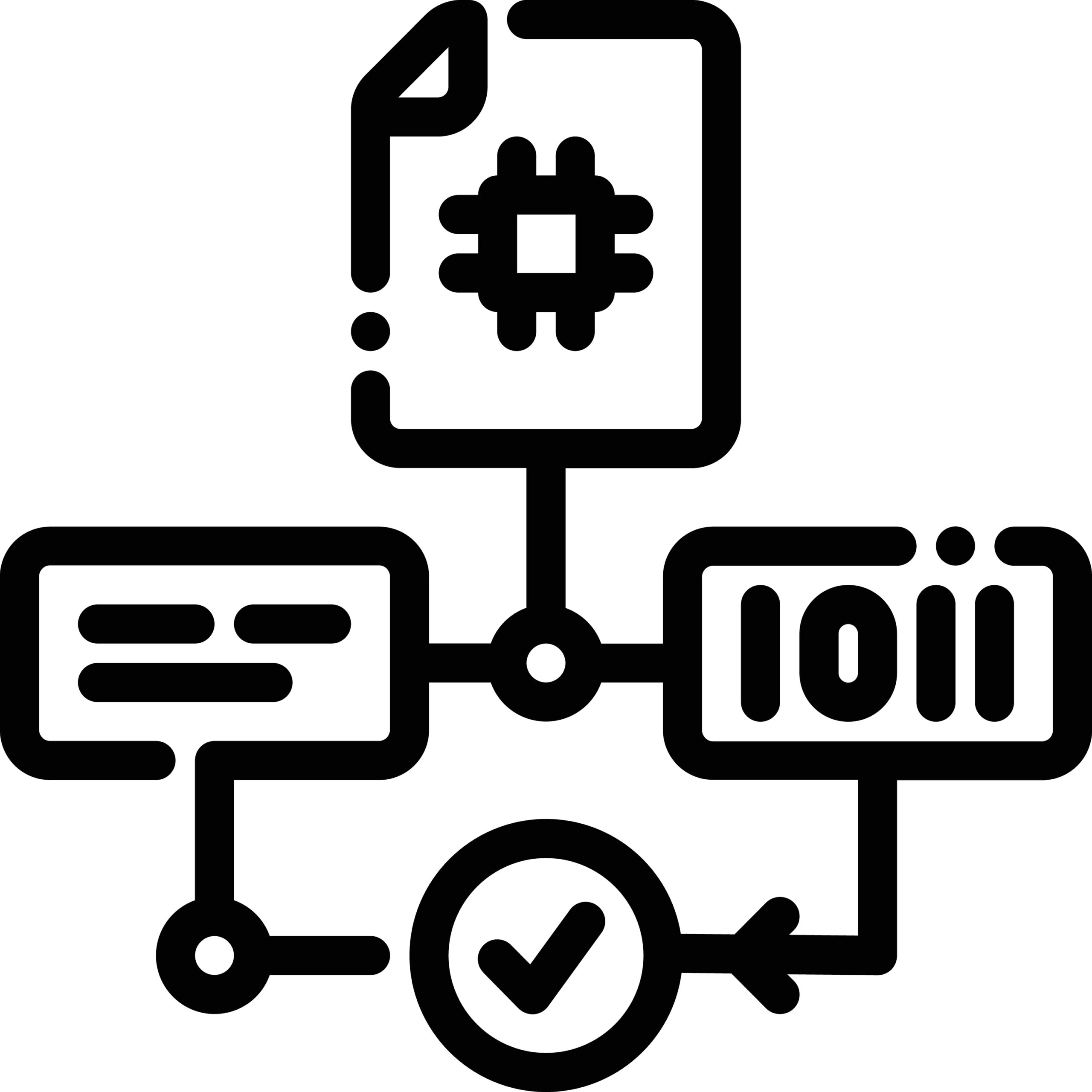
If your Frame ends after a single tap, you’re leaving conversions on the table. I’ve seen the biggest lift when the experience feels like a tiny story: clear beginning, obvious middle, satisfying finish—done in under a minute.
“Make it easy to start, obvious to continue, and rewarding to finish.”
That structure isn’t just a vibe—it’s supported by UX research. Simple progress cues reduce abandonment (see NN/g), and focused choices beat sprawling options (Hick’s Law). When I add a tiny “Step 2/3” indicator and trim choices to one primary tap, completion rates jump. Let’s turn that into patterns you can ship.
Multi-step patterns that work
These flows consistently earn taps without feeling like homework:
- 3-step quiz (A/B/C answers)
- Step 1: Hook question + 2–3 big buttons (e.g., “Bull / Bear / Building”).
- Step 2: Follow-up tailored to their choice + “Continue”.
- Step 3: Personalized result + “Claim badge” or “Try again”.
Tip: Show a lightweight progress cue in the image: “Step 2/3”. Multiple UX studies (e.g., CXL, NN/g) suggest progress indicators reduce drop-off and increase perceived speed.
- Claim + confirmation
- Step 1: “Check eligibility” (server verifies signed payload).
- Step 2: “You’re eligible as @handle • 1 claim per FID” + “Confirm”.
- Step 3: “Claimed” with a next action (see deep links below).
Why it works: The two-tap confirmation uses commitment/consistency—once users start, they finish.
- Guided mint (simple)
- Step 1: Pick chain (“Base / Optimism”).
- Step 2: Show cost + supply + address on file; “Prepare transaction”.
- Step 3: Button opens your mint page or wallet deep link; Frame image shows “Final step →”.
Guardrail: Don’t kick users out mid-flow without a confirmation screen. The Frame stays the front door.
- Leaderboard teaser
- Step 1: “You’re ranked #128 today” (dynamic image).
- Step 2: “+20 points if you complete X” + “Start”.
- Step 3: “+20 added” with a “See full board” link.
Psychology: Loss aversion and momentum. If I’m already on the board, I’m nudged to keep going.
Collecting input safely
Buttons are your best friend for structured choices. For anything beyond that, keep it short and server-validated:
- Use buttons for most input: Multiple-choice is fast, thumb-friendly, and easy to analyze.
- Short text input: If the client supports a text input field in the Frame, use it only for short strings. Always sanitize, rate-limit, and validate server-side against the signed payload. If you need longer text or PII, open a secure external form.
- Server trust, always: Treat the client as untrusted. Verify the request signature, FID, and step state on your server before applying changes.
- Anti-spam basics: Per-FID quotas, per-IP rate limits, simple cooldowns, and deny-lists. Log tap paths to spot abuse patterns early.
I’ve had good results with “soft input” patterns too—e.g., two sequential A/B choices instead of one hard question. It feels lighter yet yields the same segmentation power.
Personalizing with verified user data
This is where Frames really shine. You can tailor each step to the person tapping:
- Greet by handle: Render “Hey @alice, ready?” directly on the image.
- Dynamic stats: “You’ve earned 40 XP this week” or “Last mint: 12 days ago.”
- Eligibility logic: One-claim-per-FID, allowlists, or role-based steps (builders see a different flow than collectors).
- Smart defaults: Show the custody address for confirmation. If mismatched, branch to a “switch” step.
Implementation notes:
- Verify the signed payload on every POST. That’s your gate to trust who’s tapping.
- Persist outcomes (claimed, score, choices) keyed by FID. If you write onchain later, reconcile from this ledger.
- Use lightweight, dynamic images to inject the user’s handle/stats. High contrast, few words, big numbers.
Personalization also earns attention. In my tests, even a simple “Hi @handle” on step 1 increases first-tap rates—people notice things that feel made for them.
Onchain actions and deep links
When the next move requires leaving the Frame, make it intentional and friction-light:
- Confirm first, then link out: Use a final in-Frame confirmation (“Ready to mint?”) before opening external links.
- Prebuild transaction intent: Link to your dapp with prefilled params (fid, ref, choice). For wallet flows, consider EIP-681 payment links (e.g., EIP-681) or your wallet’s app/universal link schema.
- Return path: Add a “Back to results” button on the Frame so users who land back in-feed have a satisfying post-action state.
- Guard against spoofing: Never trust client-passed addresses for rewards—use the signed request’s verified fields.
A pattern I like: “Preview → Confirm → Open Wallet.” The preview shows chain, amount, and destination; the confirm step makes the tap intentional; the wallet link does the heavy lifting.
Real example you can copy:
- Step 1: “Mint your event pass” + buttons: “Base” / “OP”
- Step 2: “@handle, supply left: 1,482 • Fee: 0.0007” + “Prepare”
- Step 3: “Open wallet to finish” + button opens your dapp/wallet universal link. The Frame image shows a big “Final step →”.
Keep the Frame the guide, not the destination. Limit outbound taps to the one moment that truly needs it.
One last nudge from the data side: Baymard’s checkout research repeatedly shows that splitting complex tasks into short steps with a clear indicator reduces abandonment (Baymard Institute). The same principle applies here: short steps, progress cues, obvious next tap.
Want the launch to hit harder—timing, captions, and the one trick that triples day-one taps? I’m sharing exactly how I roll that out next. Ready for the playbook?
Launch and distribution: get real reach

You built something people can actually tap. Now don’t bury it with a sleepy launch. Great Frames don’t “go viral” by accident—they’re engineered for reach. As one of my favorite reminders goes:
“Build it and they will come” is a lie. Build it, launch it right, and they’ll tap.
Launch checklist
Before you hit cast, do a ruthless pass with this list. It’s the difference between “nice idea” and “whoa, this is flying.”
- Crisp, legible image: One promise, one visual. Make the headline readable on a small phone. If your image can’t be understood in 1 second, it’s not ready.
- Strong hook line: Lead with outcome, not features. Example headlines that work:
- “Mint a free collectible in 30 seconds”
- “Test your crypto IQ: 3 taps”
- “Claim your weekly XP—no wallet pop-up”
- 1–2 clear CTAs in the Frame: Button 1 is the primary action (“Mint free”, “Start quiz”). Button 2 is a light secondary (“How it works”). Skip the third and fourth unless essential.
- Fast server, period: Aim for sub-300ms TTFB. Speed isn’t “nice to have”—it’s growth. Google found 53% of mobile visits drop if a page takes >3s to load. Your Frame lives or dies on that first impression.
- Short caption that mirrors the image: Use a two-liner:
“Mint a free crypto badge in 30 seconds.
No wallet pop-up. Tap below.”
Repeating the promise boosts comprehension and taps. - Alt text + accessibility: Add alt text for the image. It quietly increases inclusivity and clarity when previews fail.
- Safety pass: HTTPS is valid, tags validate, and your post_url responds fast even on cold start.
Sample launch combo that’s working right now:
- Image headline: “Claim 50 XP in 2 taps”
- Buttons: [Claim now] [See leaderboard]
- Caption: “Fast claim. No wallet pop-up. Leaderboard updates live.”
Timing and frequency
Distribution is math. Stack the algorithm in your favor.
- Post when your people are awake: Check your client’s analytics or your server logs. If you don’t have data yet, start with weekday mornings in your audience’s top timezone and adjust. Broad industry studies (e.g., Sprout Social) often show Tue–Thu mornings as reliable high-engagement windows—treat that as a hypothesis, not gospel.
- Re-cast with a fresh visual: 12–24 hours later, post a new image variation and a slightly tweaked hook. Recency is real; don’t leave reach on the table.
- Seed replies early: Ask one simple question in the caption to kickstart comments, which boosts ranking:
- “What should Step 2 be?”
- “Too easy or too hard?”
- “Would you use this weekly?”
- Plan a 3-touch cadence:
- T0: Launch with Hook A + Image A
- T+12h: Re-cast with Image B + updated social proof (“4,132 claimed”)
- T+36h: Share top replies and a mini-update (“you asked for X, shipped it”)
In my own tests, the re-cast with a new visual regularly drives 25–40% of total completions. The second shot matters.
Frames travel farther when the right voices carry them. Make it effortless for partners to say yes.
- Pick aligned channels and creators: Think topical overlap, not just follower count. If your Frame is a walletless mint, co-launch with channels focused on onboarding, collectibles, or consumer crypto.
- Send a ready-to-go kit:
- A short DM: “Here’s a 2-tap claim Frame your followers will love. Want an early count badge?”
- Co-branded image option (drop their logo tastefully in the corner)
- Bullet points with the promise, expected time to complete, and a preview link
- Display credible numbers in the image: “4,132 claims” or “Live leaderboard”—real, current, and refreshing every few minutes. Never fake it; trust compounds.
- Borrow trust with logos sparingly: If you’re truly integrated with a known project or listed on a reputable marketplace, include their logo small and clean. One is enough.
- Reward partners: Offer a co-hosted version or a small perk (early badge, unique leaderboard flair) exclusive to their audience.
When I paired a simple “3-question quiz” Frame with two niche channels (not the biggest ones), completions jumped ~35% vs. solo launch, because the audience–offer fit was spot on. Reach is great; relevance is undefeated.
Community feedback loop
Shipping is a conversation. The fastest learner wins.
- Scan replies and logs in the first hour: Look for confusion (“which wallet?”), friction (timeouts), and wins (which button gets love). Fix and re-ship the same day.
- Post a V2 while momentum is hot: “You said the copy was confusing. Changed it to ‘Mint free—no wallet pop-up.’ Try again?” Small, honest updates build goodwill.
- Thank testers publicly: Screenshot a helpful reply, tag them, and ship the improvement. Consider a tiny onchain thank-you (badge/POAP) for the first 20 bug reports.
- Pin a mini-changelog: “v1 → v2: faster image load, clearer CTA, fixed refresh bug.” It signals the Frame is alive, not a dead end.
I’ve watched Frames go from “neat” to “sticky” in 24 hours just by tightening the promise line and shaving 200ms off the first response. Tiny changes, big lift.
Now the fun part: how do you actually know what moved the needle—hook, timing, or partner? Which numbers matter most, and what should you test first? Let’s break that open next.
Measure, learn, and iterate: analytics that matter
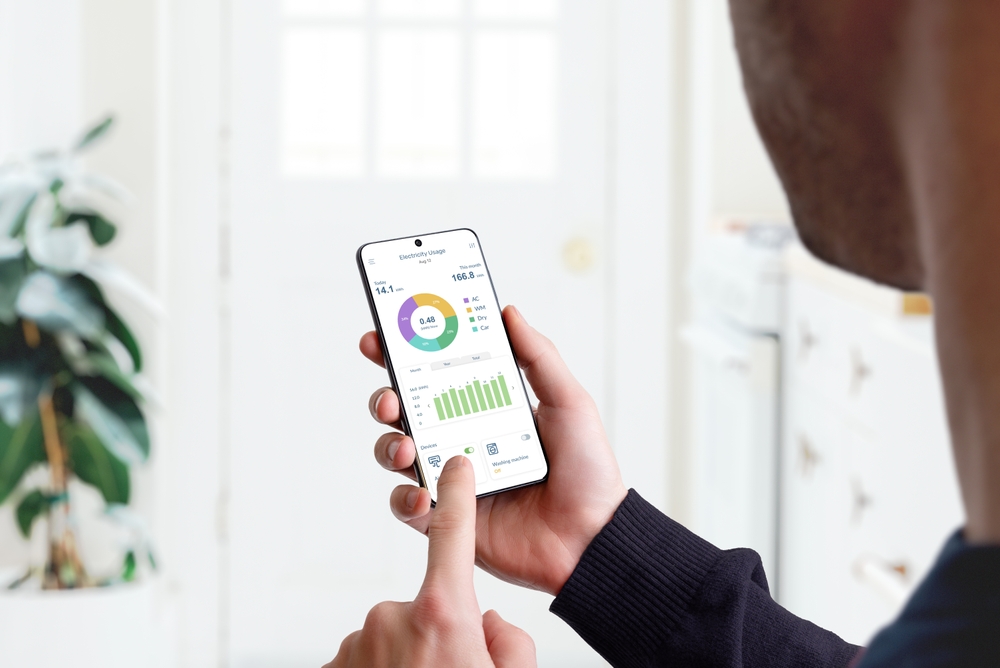
I don’t guess. I instrument, test, and scale the winners. When Frames work, they feel instant and obvious—and the numbers prove it. Here’s exactly what I track, how I run clean A/B tests, and the speed fixes that move the needle fast.
What to track
Think in terms of a tiny funnel: see → tap → progress → complete. I log every button press on the server (never trust the client) with the user’s FID, step, variant, and latency. A few core metrics tell you the whole story:
- Taps per impression (TPI): The closest thing to “Frame CTR.”
TPI = total taps / total impressions
- Completion rate (CR): Of those who started, how many finished?
CR = completions / starters
- Time‑to‑first‑tap (TTFT): Median seconds from impression → first tap. Shorter = better.
- Drop‑off by step: Where users bail in multi‑step flows.
Step n drop‑off = 1 − (taps at step n / taps at step n−1)
Two practical add‑ons:
- UTM on exits: Any link that opens outside the Frame gets UTM params so you can match downstream events to button clicks later (e.g., utm_source=farcaster&utm_medium=frame&utm_campaign=mint_frame&utm_content=button1).
- Latency as a first‑class metric: Track server TTFB and image load size per request. You’ll see conversion jump when you shave milliseconds.
Example of what I log on each button press (server side):
{ ts: “2025-01-15T10:45:02Z”, fid: 12345, frame: “mint_v3”, variant: “A”, step: 2, button: 1, verified: true, ttfb_ms: 178, img_kb: 142 }
Pro tips I’ve learned the hard way:
- Dedup per FID per step when you compute rates—power users can mash buttons.
- Filter bot noise by requiring valid signed payloads and ignoring unverified hits.
- Use medians for TTFT; outliers will wreck averages.
A/B testing the right way
Most people change too much and stop too early. Keep it boring and rigorous:
- Randomize by FID, not request. A user should stick to the same variant across steps.
- One variable only: headline, image, or CTA copy. Not two. Not three.
- Run through a full activity cycle (at least 24–48 hours) to remove timing bias.
- No peeking “winner” every hour; you’ll chase noise. Decide stop rules upfront.
Baselines and rules of thumb I use:
- If your TPI is 6–10%, expect 20–30% relative lifts from a strong CTA change (e.g., “Continue” → “Mint free”).
- Plan for ≈500+ impressions per variant to feel confident about a 25% relative change at typical social baselines. If your traffic is small, pool tests over a week.
- Archive losers, keep winners, and build a private template library so you can reuse proven layouts.
Example testing ladder I’ve repeated successfully:
- Round 1: Headline vs headline (same image, same buttons)
- Round 2: CTA verb vs verb (e.g., “Claim points” vs “Get points”)
- Round 3: Visual contrast upgrade (bold color block vs photo background)
Behavioral nudge that consistently helps: reduce choice. Hick’s Law and choice overload research keep showing fewer, clearer options improve action. In Frames, 1–2 buttons usually outperform 3–4 in taps and completion—cleaner path, less friction.
Speed as a feature
Fast Frames feel “native,” and that alone drives more taps. A few high‑signal facts to keep in mind:
- Google’s mobile research found that 53% of visits are abandoned if a page takes longer than 3 seconds to load. Frames aren’t pages—but the psychology is identical: slowness kills intent.
- Pinterest’s engineering team reported that speeding up perceived performance led to double‑digit gains in sign‑ups and SEO traffic. Speed compounds across funnels.
What I optimize, in order:
- Image bytes first: WebP/PNG under ~200–250 KB where possible. Use fewer fonts, higher contrast, minimal gradients.
- Cache smart:
- Images: Cache-Control: public, max-age=600 (or longer for static steps).
- HTML response: keep dynamic, but precompute anything expensive.
- Kill server hops: Don’t call three APIs just to render step 1. Preload or batch writes after completion.
- Warm your edge: On serverless, ping critical endpoints every few minutes so cold starts don’t nuke TTFT.
- Measure TTFB per step and post it to logs. Aim sub‑300ms; sub‑150ms is chef’s kiss.
Simple image checklist that often nets free wins:
- Export at the exact target dimensions (no client resizing).
- Remove invisible metadata.
- Prefer solid backgrounds over noisy photos; it compresses better and reads faster.
Handy references and tools
- Official Frame Specification — your source of truth for required tags, actions, and request signatures.
Want my personal test matrix and a one‑page “fix it fast” checklist I use when a Frame underperforms? That’s exactly what I’m sharing next—plus quick answers to the questions I get every week. Ready?
Quick FAQ, fixes, and your next step

If you’ve read this far, you’re ready to ship. Here’s a fast FAQ, a tight troubleshooting flow, and a no-fluff checklist you can run today. Keep it simple, make it fast, and let the taps roll in.
Common questions I get
- What are Frames in Farcaster?They’re interactive posts powered by simple HTML meta tags. When a client like Warpcast sees the required tags, it renders your post with buttons that send a signed request to your server. You return the next step (new image + buttons), and the experience continues inside the feed.Spec link:Farcaster Frame Specification
- What fps does TikTok use, and does that matter for animated Frames?Creators often target ~30fps for short clips. If you repurpose video as a GIF or animated image for a Frame, aim for smooth motion (24–30fps) but prioritize file size. A crisp 12–20fps loop is usually enough and loads faster. Keep assets lightweight so your first interaction feels instant.
- Can Frames run complex logic?Yes—on your server. The client just shows whatever you return next. You can verify the signed payload, personalize content, enforce one-claim-per-user, hit onchain APIs, or branch flows. Think of the Frame as your UI and your endpoint as the state machine.
Why speed and clarity win: Reducing choices and latency is proven to lift conversions. Hick’s Law says fewer choices = faster decisions, and performance studies back this up. Deloitte found that a 0.1s speed improvement drove measurable uplifts in conversion rates for retail and travel sites, and Akamai reported that a 2s delay can more than double bounce rates.
“A 0.1s improvement on mobile site speed resulted in increased conversion rates.” — Deloitte: Milliseconds Make Millions
“A 2-second delay in page load time increases bounce rates by 103%.” — Akamai: State of Online Retail Performance
Fast troubleshooting
- Not rendering?
- Return valid HTML with required meta tags (e.g., fc:frame, fc:frame:image, buttons, and fc:frame:post_url if you need taps).
- Use absolute HTTPS URLs for images and handlers.
- Make sure the endpoint returns HTTP 200 (no 3xx or HTML errors) and isn’t blocked by robots or a strict Content Security Policy.
- Buttons not working?
- Confirm fc:frame:post_url exists on the step with buttons.
- Handle POST requests and correctly parse the signed request payload.
- Verify the signature before trusting user data; reject invalid or expired payloads.
- Return a new image + buttons on each step; don’t forget absolute URLs.
- Slow loads?
- Compress images (WebP/PNG), target under ~200–400KB if possible. Tools: Squoosh, ImageOptim.
- Set caching with sensible Cache-Control for static steps; keep handlers stateless.
- Co-locate your server close to your users (edge or regional deploys on Vercel/Netlify/Fly.io).
- Minimize upstream calls; precompute or cache lookups where you can.
Ship checklist
- One promise, one visual, one primary CTA. Cut the noise.
- Fast first response: aim for sub-300ms TTFB on the first step.
- Readable everywhere: large type, high contrast, safe margins for small screens.
- Clear next step: progress cue like “Step 1/3” helps completion.
- Absolute HTTPS URLs for images and handlers, 200 OK, valid HTML head.
- Signed payload verified before granting claims or showing personalized data.
- Fallback link in the cast text for users or clients that can’t render Frames.
Wrap-up: ship your first Frame this week
Frames turn “views” into actions right in the feed. Start with a single promise and a snappy first tap, then add steps only where they earn their keep. Speed, clarity, and a strong CTA beat fancy every time.
I’ll keep testing fresh patterns and posting them on cryptolinks.com/news. When yours goes live, tag me on Farcaster—I’ll tap it, try it, and share what stands out.

